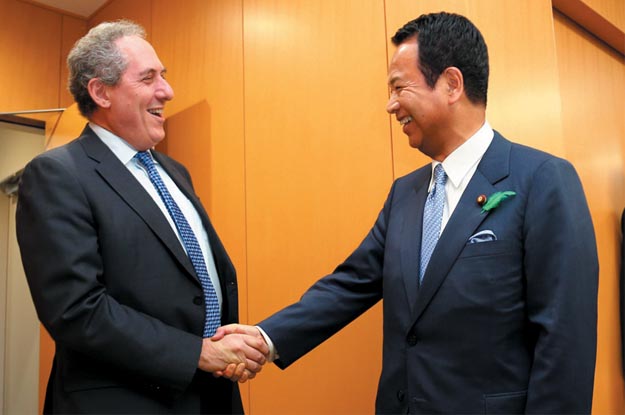It took more than five years, but the Trans-Pacific Partnership (TPP) is now near the finish line. Congressional passage of Trade Promotion Authority (TPA) earlier this summer gave U.S. officials the mandate to conclude the TPP talks and revived procedures to expedite its ratification. The trade pact could be signed later this year.
The TPP is by far the most important and comprehensive trade pact undertaken since the advent of the World Trade Organization (WTO) in 1995. The 12 participating countries account for about 40 percent of global output and a quarter of world exports.
With the Doha Round of WTO talks near collapse, the TPP is the only initiative that commits major trading countries, both developed and developing, to deep liberalization of trade in goods and services. It also establishes strong new obligations on investment, labor, the environment, and state-owned enterprises.
After the deal is struck, the next step is ratification by national legislatures. The big test will be in the U.S. Congress, which will consider TPP implementing legislation under the newly minted fast-track TPA procedures, most likely in early 2016.
In the U.S. ratification debate, look for politicians to take aim at the provisions that most affect their constituents. Facts will be ignored—or worse, distorted. Farm lobbies will criticize what they argue are the incomplete cuts in trade barriers, despite the fact that Japan and others will open up their markets more than they ever have in the past. Industrial firms will complain that they are still barred from competing for public procurement contracts in key areas. Service industries will bemoan the limited commitments to reform, though the TPP will open more access than any previous WTO or free trade agreement. And unions will complain that trade costs jobs in the U.S. economy, though most of the churn in labor markets results from technological advances.
The TPP is a big deal, especially for the five participants from the Americas. TPP provisions will help the U.S., Canada and Mexico update and upgrade NAFTA, which— after 20 years—is in need of renovation. Chile and Peru will solidify their ties with East Asia and open new opportunities in Oceania. And all five will benefit from the opening of the Japanese market.
But the TPP will pose challenges for others in the Western Hemisphere. For members of Mercosur (Southern Common Market) and the smaller economies of Central America and the Caribbean, the success of the TPP and the ongoing stalemate in the WTO leaves them facing new trade discrimination that will further exclude them from global supply chains. Brazil is slowly recognizing this; others, like Argentina, Bolivia, Ecuador, and Venezuela, continue to obstruct the WTO’s Doha Round.
In part, the TPP is a response to the WTO drift; countries that want to compete and grow their economies are using the TPP to reinforce domestic reforms and improve the climate for investment.
For the others, the trading system is leaving them behind and their economies will suffer accordingly. Is it too late for those countries to see the light and engage constructively in the WTO?





